
views
Completing Tasks Online

Take surveys. You can earn $50 to $100 per month in cash and products by taking online surveys. Find survey sites by searching for “paid survey sites” online. Sign up for several survey sites to increase your chances of being selected for higher-paying surveys. Register with an email address, and check your email often so you can respond quickly to survey offers. Most surveys pay from $1 to $3, and the surveys generally take up to 45 minutes to complete. You might also get paid in gift cards, free products or by being entered in a sweepstakes. Never pay to participate in surveys. Look for a privacy policy displayed prominently on the site so you know that they are not selling your personal information.

Test websites. Remote usability testing means getting paid to navigate a website for the first time and giving feedback to the website owner. Most tests take approximately 15 minutes, and you can get paid up to $10 for each test. A test involves performing a scenario on the client’s website and recording yourself doing it. For example, you might be asked to go through the process of selecting and purchasing an item on a retailer’s website. You need a computer with a microphone, an updated web browser and a high speed internet connection. Sites that pay you to test websites include User Testing, WhatUsersDo, UserLytics, UserFeel.

Tutor students. Many families prefer the flexibility of using an online tutor. Depending on your background, you could be simply helping a child with homework or providing college-level support. You need to have your own computer and high speed internet. Experience required differs among companies. Some require “strong experience,” while others require a specific educational background. However, most companies do require a college degree. Some companies assign students to you, while others post your profile on their site and let customers select you. You can make anywhere from $9 to $30 per hour based on your educational background and the subject you teach. Sites that hire elementary-level tutors include Tutor.com, Aim4a and Brainfuse. Kaplan hires SAT and ACT tutors.
Creating a Niche Website

Understand how a niche website works. A niche website focuses on very targeted, specific information. The content must be specific, useful and interesting to your target audience. Successful niche websites get anywhere from 1,000 to 10,000 visitors per month. You build content on a particular keyword, and you make passive income with Google Adsense or through affiliate links.
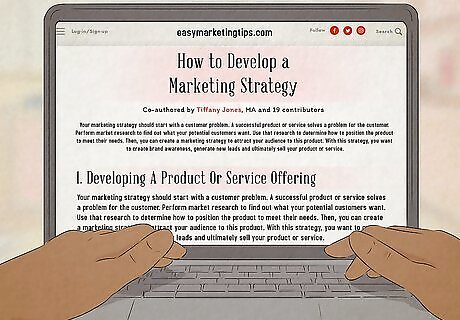
Find a profitable niche. Starting with your interests, write down as many niche ideas as you can. Think about topics people might search online. Ideas include passions (like surfing or body building), fears (like spiders or speaking in front of crowds) and problems (like getting out of debt). Do keyword research to see if others are interested in the topic. Find out if a domain name is available that matches the keyword 100 percent. Use a keyword research tool to perform keyword research.
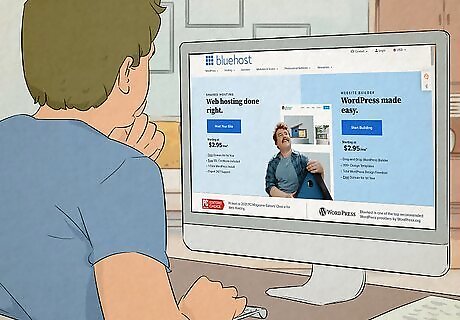
Set up the site. Choose a website building platform, such as WordPress, Joomla or Drupal. Next, choose a domain name and web hosting for your site. The domain name is your web address. Web hosting is a service that connects your site to the internet. Once you have your domain name and web hosting, go to the control panel of your hosting account and install your website platform. Design your website by choosing and installing a theme. Popular web hosting companies include Bluehost and WPEngine.

Create content. Create content that people will find valuable and that will help you rank higher in the search engines. Keyword research can help you to find out what topics people are searching for. Write content on these topics to improve your rank in the search engines. You cannot monetize without any visitors. Use a tool like Market Samurai to do keyword research. Put out advertisements to increase traffic to your site. Create a marketing campaign using social media outlets such as Facebook or Twitter.
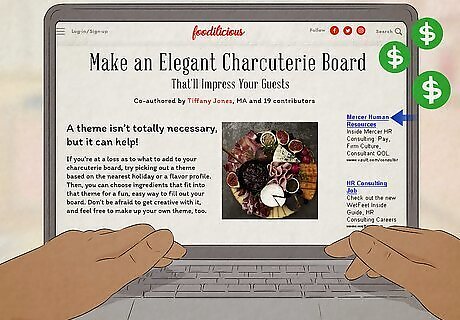
Monetize your site. Choose from several different strategies to monetize your website. You can have ads on your website and get paid when visitors click on them. Also, you can promote products, either your own or someone else’s, and get paid when people purchase. With Google Adsense, you install some code on your site that allows ads to appear on it. You get paid when visitors click on the ads. You can also sell advertising space on your website. Affiliate marketing means that you promote products for your niche. A link or banner advertising the product is displayed on your site. If visitors click on it and make a purchase, you receive a commission.
Writing Freelance Articles

Consider your expertise. If you take the time to reflect on your experiences, you will realize that you have more knowledge about which to write than you might think. Begin by listing three assets that define you, such as your profession, a special hobby or a personality trait. Next, list three things that inspire you, such as religion, education or charity. Finally, list three of your dreams, such as getting married, traveling or spending more time with your children. These three lists should give you many ideas of topics about which you can write.

Learn the principles of effective writing. As a freelance writer, much of your work will likely be published on the internet. The principles of writing for the web differ slightly than writing for print. The content must still be high-quality and well-written, but the presentation must be adjusted for the way people read online material. Because of the low resolution of online text, readers tend to scan rather than read everything from top to bottom. Make your text easily scannable by breaking up text using descriptive headings and bullet points. Get to the point by using the inverted pyramid style. This means writing the conclusion first and then providing examples to support it. Make your copy effective by being concise and using simple language. Aim your writing to an eighth-grade reading level. Remove unnecessary or confusing words or terms. Include keywords and phrases that improve your ranking in the search engines.

Find work. When you first start out, you may have to accept work writing about a topic you don’t find all that interesting. You must keep an open mind and be willing to accept work that may not be in your desired field. However, as you continue to write, you not only learn about more topics, but you also build your reputation. With time, you can be choosier about assignments you want to accept. Browse the internet for freelancing websites that hire contractors to do work online.
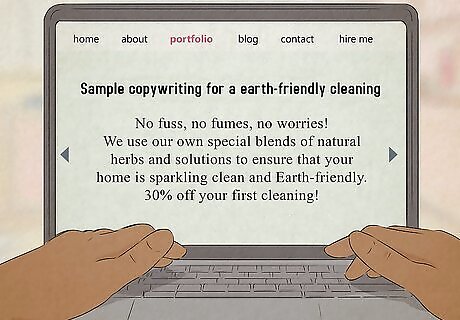
Get samples. When you first start out as a freelance writer, it can be hard to get work without any published samples. However, it is possible to get quality samples if you are willing to do some writing for free. First, you can publish content on your own blog or website. Also, you can write guest posts for someone else’s blog. Finally, you can write blog posts for free in exchange for a byline.

Write pitches. If you have located a client for whom you want to write, send pitches, which are topic ideas for articles. Write pitches that not only show your expertise but also demonstrate your enthusiasm for the topic. First, read the publication to which you are sending pitches to familiarize yourself with what they publish. If applicable, identify a specific section and send our pitch to the appropriate editor. Also, include a brief summary of who you are.

Create a writer website or blog. A website not only demonstrates your technical ability, but it also creates an online hub that allows clients to connect to you. Keep the design of your website clean and uncluttered. Include examples of your work that demonstrate the kind of writing you do. Make the samples easy to find and to read, and make it easy for visitors to figure out how to contact you.. A blog highlights your technical ability and showcases your ability to write blog posts. Your blog can be about different topics than those you write about for your clients. In fact, it should be on a topic that interests you. Visitors will see that you can not only write, but you can also build an online community. A good blog has the potential to earn you many referrals for more clients.
Selling Your Stuff Online
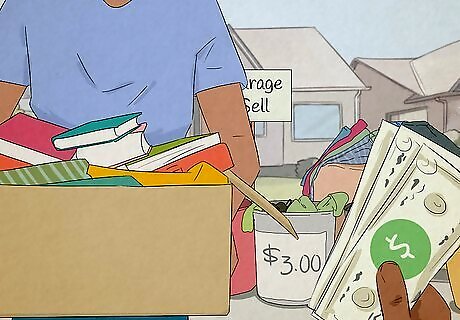
Find items to sell. Purge your house. Set aside a few days or a weekend to clean out and declutter your house. Identify items to throw away, donate and sell. Categorize the items you want to sell. Different categories of items do better on different sites. You can also go out and buy items for selling online at a mark-up. Books, CD’s and DVD’s sell well on Amazon. Collectibles, high-end clothing, and small electronics sell well on eBay. Craigslist is best for generic items such as tools or toys.

Open sellers accounts. Create accounts on Amazon, eBay, and Craigslist. These platforms make it simple for sellers to set up accounts. You generally need to provide some personal information such as your name and address, and you may need to provide financial information for processing payments. Amazon sellers connect their checking accounts, and proceeds from sales are directly deposited into their checking accounts. eBay will either send your payments directly to your checking account or will deposit them in your PayPal account.

Learn then selling guidelines. Each marketplace has guidelines that define what you can and cannot sell. State and federal laws also impact what items are prohibited. In general, you cannot sell alcohol, weapons, service contracts, animals or event tickets. Also, while not always prohibited, you may find restrictions on how you can sell items in some categories, such as art, gift cards and coupons. eBay, Craigslist and Amazon publish these guidelines on their websites.

Research selling prices of items similar to yours. Look up completed sales or current listings of items similar to yours. Find the high- and low-end prices, and price your object around the median price level. If you want your item to sell quickly, price it at the low end. The condition of the item also affects the price. Items in poorer condition should be priced at the lower end. Also, consider how many listings there already are of items similar to yours. If many similar items will be competing with yours, you may have to set the price lower to get the sale.

Consider selling in lots. A lot is a collection of similar items that is sold in a group. For example, if you have a collection of books, magazines or similar pieces of jewelry, consider selling them all at once in a lot. You many not make as much money as you would have if you sold each item separately. However, the items will likely sell more quickly in a lot than they would individually.
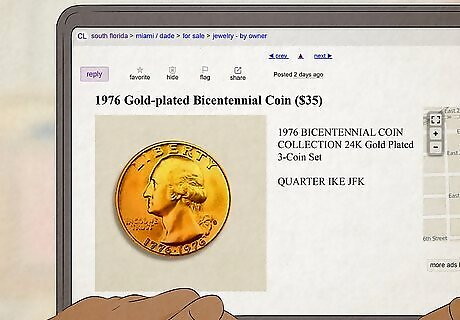
Write a thorough description. Including more details increases the likelihood of making a sale. Since the buyer can’t see the object in person before purchasing, give them as much information as possible so they feel like they know what they’re buying, If an item is used, be truthful and upfront about its condition. Proofread your description before publishing it. Write a descriptive title that provides information about the product, such as size, color or design.

Add high-quality pictures of the item. Use several images that show the item from different angles. Remove all clutter from the background because it detracts attention from the item you’re selling. Use natural lighting instead of a flash. Take close-ups so people can see all the details of the item.

Provide excellent customer service. Answer any questions buyers post as quickly as possible. Be professional and courteous. Positive communication builds your reputation with buyers and gets you to return business. Also, package your product well and ship it out quickly. Allowing an item to become damaged or taking too long to ship can negatively affect your reputation among buyers. Wrap all items, especially fragile ones, in appropriate packaging. Commit to shipping items as soon as you receive payment.




















Comments
0 comment